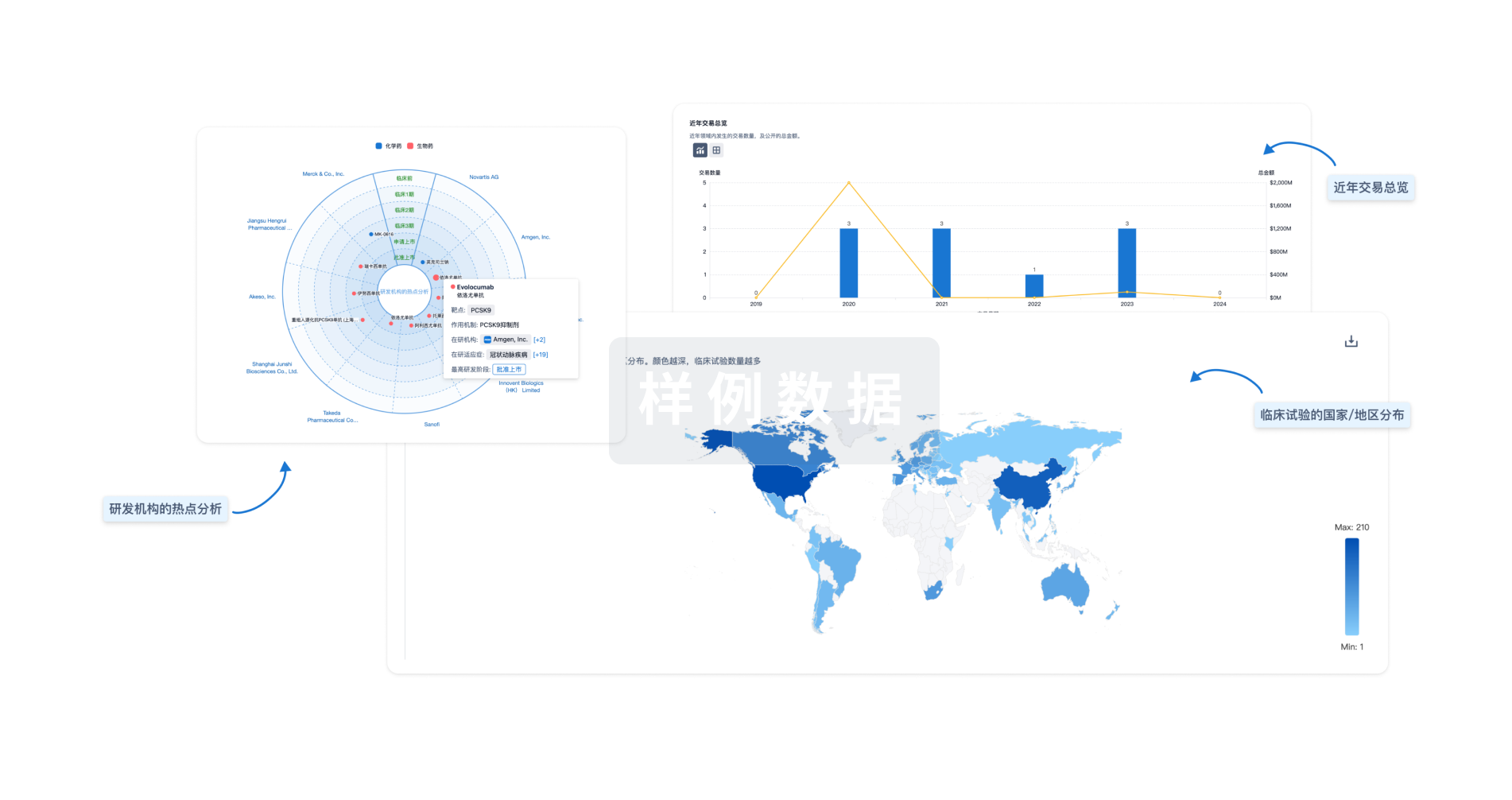预约演示
更新于:2025-05-07
KEAP1
更新于:2025-05-07
基本信息
别名 Cytosolic inhibitor of Nrf2、INrf2、KEAP1 + [12] |
简介 Substrate-specific adapter of a BCR (BTB-CUL3-RBX1) E3 ubiquitin ligase complex that regulates the response to oxidative stress by targeting NFE2L2/NRF2 for ubiquitination (PubMed:14585973, PubMed:15379550, PubMed:15572695, PubMed:15601839, PubMed:15983046, PubMed:37339955). KEAP1 acts as a key sensor of oxidative and electrophilic stress: in normal conditions, the BCR(KEAP1) complex mediates ubiquitination and degradation of NFE2L2/NRF2, a transcription factor regulating expression of many cytoprotective genes (PubMed:15601839, PubMed:16006525). In response to oxidative stress, different electrophile metabolites trigger non-enzymatic covalent modifications of highly reactive cysteine residues in KEAP1, leading to inactivate the ubiquitin ligase activity of the BCR(KEAP1) complex, promoting NFE2L2/NRF2 nuclear accumulation and expression of phase II detoxifying enzymes (PubMed:16006525, PubMed:17127771, PubMed:18251510, PubMed:19489739, PubMed:29590092). In response to selective autophagy, KEAP1 is sequestered in inclusion bodies following its interaction with SQSTM1/p62, leading to inactivation of the BCR(KEAP1) complex and activation of NFE2L2/NRF2 (PubMed:20452972). The BCR(KEAP1) complex also mediates ubiquitination of SQSTM1/p62, increasing SQSTM1/p62 sequestering activity and degradation (PubMed:28380357). The BCR(KEAP1) complex also targets BPTF and PGAM5 for ubiquitination and degradation by the proteasome (PubMed:15379550, PubMed:17046835). |
关联
29
项与 KEAP1 相关的药物作用机制 KEAP1 agonists [+1] |
非在研适应症- |
最高研发阶段临床1期 |
首次获批国家/地区- |
首次获批日期1800-01-20 |
作用机制 IFNβ抑制剂 [+4] |
在研适应症 |
非在研适应症- |
最高研发阶段临床1期 |
首次获批国家/地区- |
首次获批日期1800-01-20 |
靶点 |
作用机制 KEAP1 inhibitors |
在研适应症 |
非在研适应症- |
最高研发阶段临床前 |
首次获批国家/地区- |
首次获批日期1800-01-20 |
3
项与 KEAP1 相关的临床试验CTRI/2025/04/084270
A Randomized, Double-Blind, Vehicle-Controlled Study to Evaluate the Safety, Tolerability, Pharmacokinetics, and Efficacy of Topically Applied SCD-153 in Patients With Alopecia Areata - NIL
开始日期2025-05-14 |
CTRI/2023/10/059183
A Randomized, Double-Blind, Vehicle-Controlled, Study to Evaluate the Safety, Tolerability, & Pharmacokinetics of topically applied SCD-153 in Healthy Volunteers - Nil
开始日期2023-11-28 |
NCT05954312
A Phase 1, Open-label, Multicenter, First-in-Human Study to Evaluate the Safety, Tolerability, Pharmacokinetics, Pharmacodynamics, and Preliminary Anti-tumor Activity of VVD-130037, a Kelch-like ECH Associated Protein 1 (KEAP1) Activator, in Participants With Advanced Solid Tumors
A FIH dose escalation and dose expansion study to evaluate VVD-130037 in participants with advanced solid tumors as a single agent, in combination with docetaxel, and in combination with paclitaxel.
开始日期2023-07-28 |
申办/合作机构 |
100 项与 KEAP1 相关的临床结果
登录后查看更多信息
100 项与 KEAP1 相关的转化医学
登录后查看更多信息
0 项与 KEAP1 相关的专利(医药)
登录后查看更多信息
6,890
项与 KEAP1 相关的文献(医药)2025-12-31·Redox Report
Mesenchymal stem cells enchanced by salidroside to inhibit ferroptosis and improve premature ovarian insufficiency via Keap1/Nrf2/GPX4 signaling
Article
作者: Tuo, Rui ; Xiao, Yang ; Chen, Lixuan ; Lv, Tiying ; Wu, Yingnan
2025-12-31·Redox Report
MS-275 facilitates osseointegration in osteoporotic rats by mitigating oxidative stress via activation of the miR-200a/Keap1/Nrf2 signaling pathway
Article
作者: Yan, Junjie ; Li, Jianqiao ; Chen, Yuhu ; Yang, Min ; Guan, Wengang ; Zhou, Zhi ; Gu, Qinsong ; Jiang, Wenkai ; Chen, Bin
2025-12-31·Redox Report
Flavonoids from
Polypodium hastatum
as neuroprotective agents attenuate cerebral ischemia/reperfusion injury
in vitro
and
in vivo
via activating Nrf2
Article
作者: Du, Dan ; Yao, Huankai ; Wu, Ruiqing ; Qi, Suhua ; Yang, Feng ; Ai, Fengwei ; Li, Yan
146
项与 KEAP1 相关的新闻(医药)2025-04-28
SHANGHAI, April 27, 2025 /PRNewswire/ -- Abbisko Therapeutics Co., Ltd. (Abbisko Therapeutics
02256.HK) today announced that it has presented four late-breaking pre-clinical research posters at the 2025 AACR conference held in Chicago, Illinois (USA) from April 25 to April 30. Results were shared for ABSK112 (EGFR exon20ins inhibitor), ABSK131 (PRMT5*MTA inhibitor), and ABK-KRAS-1 (pan-KRAS inhibitor), as well as results from a study investigating potential resistance mechanisms to KRAS G12C inhibitors.
Abbisko presented the following posters at the 2025 AACR:
Title1: Preclinical Evaluation of ABSK112, a Selective and CNS-penetrant Compound with Strong HER2 Inhibitory Activity for Treating HER2-Driven Solid Tumors
Session Category: Late-Breaking Research: Experimental and Molecular Therapeutics 2
Session Date and Time: April 28, 2025, 2:00 PM - 5:00 PM (CDT)
Location: Poster Section 54
Poster Board Number: 14
Poster Number: LB240
Conclusion:
Our findings establish ABSK112 as a potent, selective and CNS-penetrant HER2 inhibitor, warranting further clinical evaluation of it as a monotherapy or in combination with HER2-targeted ADCs for the treatment of HER2+ cancers with brain metastases.
Title 2: Loss-of-Function (LoF) of KEAP1 promotes cell survival through multiple mechanisms, leading to resistance to KRAS G12C inhibitors
Session Title: Late-Breaking Research: Experimental and Molecular Therapeutics 3
Session Date and Time: April 29, 2025 9: 00AM – 12: 00 PM (CDT)
Location: Poster Section 52
Poster Board Number: 1
Poster Number: LB278
Conclusion:
KEAP1 LoF mutant NSCLCs develop resistance to KRAS G12C inhibitors through reduced drug-induced ROS accumulation, metabolic adaptation, and sustained activation of MAPK and AKT signaling. Combination therapies targeting glutamine metabolism (e.g., GLS1 inhibitors), MAPK (e.g., MEK inhibitors), and PI3K-AKT-mTOR pathways (e.g., BEZ235) reverse resistance and improve therapeutic efficacy in KEAP1-mutant cell lines. These strategies may restore sensitivity to KRAS G12C inhibitors and enhance clinical outcomes.
Title 3: The MTA-Cooperative PRMT5 Inhibitor ABSK131 Exhibits Potent Activity and Broad Synergistic Potential in MTAP-Deleted Cancer Models
Session Category: Late-Breaking Research: Experimental and Molecular Therapeutics 4
Session Date and Time: April 30, 2025 9:00 AM - 12:00 PM (CDT)
Location: Poster Section 51
Poster Board Number: 9
Poster Number: LB427
Conclusion:
ABSK131 exhibits strong anti-tumor activity in MTAP-deleted lung and pancreatic cancer models and synergizes effectively with multiple therapeutic agents. These findings support the continued clinical development of ABSK131 as both a monotherapy and in combination regimens for MTAP-deleted cancers.
Title 4: Discovery and characterization of a highly potent and orally available small-molecule inhibitor for diverse KRAS mutations
Session Category: Late-Breaking Research: Experimental and Molecular Therapeutics 4
Session Date and Time: April 30, 2025 9:00 AM - 12:00 PM (CDT)
Location: Poster Section 51
Poster Board Number: 13
Poster Number: LB431
Conclusion:
Taken together, ABK-KRAS-1 exhibits broad in vitro activity against different KRAS mutations and induces dose-dependent tumor regression in KRAS mutated xenograft models. Moreover, ABK-KRAS-1 possesses favorable drug-like properties. Here, ABK-KRAS-1 is presented as a promising therapeutic candidate for the treatment of cancers harboring KRAS mutations.
About Abbisko Therapeutics
Founded in April 2016, Abbisko Therapeutics Co., Ltd. (HKEX:
02256.HK), is an oncology-focused biopharmaceutical company based in Shanghai that is dedicated to the discovery and development of innovative medicines to treat unmet medical needs in China and globally. The Company was established by a group of seasoned drug hunters with rich research & development and managerial expertise from top multinational pharmaceutical companies. Since its founding, Abbisko Therapeutics has built an extensive pipeline of innovative programs focused on precision oncology and immuno-oncology.
Please visit
for more information.
SOURCE Abbisko
WANT YOUR COMPANY'S NEWS FEATURED ON PRNEWSWIRE.COM?
440k+
Newsrooms &
Influencers
9k+
Digital Media
Outlets
270k+
Journalists
Opted In
GET STARTED
AACR会议
2025-04-28
2025年4月28号,和誉医药(港交所代码:02256)宣布,其在4月25日至30日于美国芝加哥举行的2025年美国癌症研究协会(AACR)年会上以壁报的形式发布了四项最新的临床前研究结果。包括其自主研发的EGFR Exon20ins抑制剂ABSK112和PRMT5*MTA抑制剂ABSK131以及pan-KRAS抑制剂 ABK-KRAS-1,以及一项研究KRAS G12C抑制剂潜在耐药机制的最新临床前研究成果。和誉医药在此次AACR大会上展示的报告信息如下:标题1: Preclinical Evaluation of ABSK112, a Selective and CNS-penetrant Compound with Strong HER2 Inhibitory Activity for Treating HER2-Driven Solid Tumors壁报场次:最新突破性研究:实验性分子疗法2壁报展示位置:54展区,14号板报报告时间:2025年4月28日2:00PM-5:00PM(美国中部时间)壁报展示编号:LB240结论:我们的研究结果表明,ABSK112是一种具有高效、选择性强且可穿透中枢神经系统的HER2抑制剂,支持其作为单药治疗或与靶向HER2的ADCs联合使用,进一步在伴有脑转移的HER2阳性癌症患者中进行临床评估。标题2: Loss-of-Function (LoF) of KEAP1 promotes cell survival through multiple mechanisms, leading to resistance to KRAS G12C inhibitors壁报场次:最新突破性研究:实验性分子疗法3壁报展示位置:52展区,1号板报报告时间:2024年4月29日9:00AM - 12:00 PM(美国中部时间)壁报展示编号:LB278结论:我们的研究表明,KEAP1 功能缺失(LoF)突变的非小细胞肺癌(NSCLC)通过降低药物诱导的活性氧(ROS)积累、代谢适应以及持续激活 MAPK 和 AKT 信号通路等多种方式,对 KRAS G12C 抑制剂产生耐药性。靶向谷氨酰胺代谢(如 GLS1 抑制剂)、MAPK 通路(如 MEK 抑制剂)以及 PI3K-AKT-mTOR 通路(如 BEZ235)的联合治疗可逆转耐药性,并在 KEAP1 突变细胞系中提高治疗效果。这些策略有望恢复对 KRAS G12C 抑制剂的敏感性,并改善临床疗效。标题3: The MTA-Cooperative PRMT5 Inhibitor ABSK131 Exhibits Potent Activity and Broad Synergistic Potential in MTAP-Deleted Cancer Models壁报场次:最新突破性研究:实验性分子疗法4壁报展示位置:51展区,9号板报报告时间:2025年4月30日9:00AM-12:00PM(美国中部时间)壁报展示编号:LB427结论:ABSK131在MTAP纯合缺失的肺癌和胰腺癌模型中表现出显著的抗肿瘤活性,并与多种治疗药物存在较强的协同效应。研究成果为ABSK131在MTAP纯合缺失的肿瘤中以单药或者联合治疗方案的临床开发提供了有力支持。标题4: Discovery and characterization of a highly potent and orally available small-molecule inhibitor for diverse KRAS mutations壁报场次:最新突破性研究:实验性分子疗法4壁报展示位置:51展区,13号板报报告时间:2025年4月30日9:00AM-12:00PM(美国中部时间)壁报展示编号:LB431结论:ABK-KRAS-1在体外实验表现出对不同KRAS突变的广谱的活性,在KRAS突变肿瘤模型中能剂量依赖性地诱导肿瘤消退。此外,ABK-KRAS-1具有良好的成药性。因此ABK-KRAS-1可作为一款用于治疗携带KRAS突变癌症的非常有前景的治疗候选药物。2025 AACR | Abbisko Therapeutics Presents Late-Breaking Pre-clinical Research Results on ABSK112 (EGFR exon20ins), ABSK131 (PRMT5*MTA), and ABK-KRAS-1 (pan-KRAS)28 April 2025, Shanghai – Abbisko Therapeutics Co., Ltd. (Abbisko Therapeutics 02256.HK) today announced that it has presented four late-breaking pre-clinical research posters at the 2025 AACR conference held in Chicago, Illinois (USA) from April 25 to April 30. Results were shared for ABSK112 (EGFR exon20ins inhibitor), ABSK131 (PRMT5*MTA inhibitor), and ABK-KRAS-1 (pan-KRAS inhibitor), as well as results from a study investigating potential resistance mechanisms to KRAS G12C inhibitors.Abbisko presented the following posters at the 2025 AACR:Title 1: Preclinical Evaluation of ABSK112, a Selective and CNS-penetrant Compound with Strong HER2 Inhibitory Activity for Treating HER2-Driven Solid TumorsSession Category: Late-Breaking Research: Experimental and Molecular Therapeutics 2Session Date and Time: April 28, 2025, 2:00 PM - 5:00 PM (CDT)Location: Poster Section 54Poster Board Number: 14Poster Number: LB240Conclusion: Our findings establish ABSK112 as a potent, selective and CNS-penetrant HER2 inhibitor, warranting further clinical evaluation of it as a monotherapy or in combination with HER2-targeted ADCs for the treatment of HER2+ cancers with brain metastases.Title 2: Loss-of-Function (LoF) of KEAP1 promotes cell survival through multiple mechanisms, leading to resistance to KRAS G12C inhibitorsSession Title: Late-Breaking Research: Experimental and Molecular Therapeutics 3Session Date and Time: April 29, 2025 9: 00AM – 12: 00 PM (CDT)Location: Poster Section 52Poster Board Number: 1Poster Number: LB278Conclusion: KEAP1 LoF mutant NSCLCs develop resistance to KRAS G12C inhibitors through reduced drug-induced ROS accumulation, metabolic adaptation, and sustained activation of MAPK and AKT signaling. Combination therapies targeting glutamine metabolism (e.g., GLS1 inhibitors), MAPK (e.g., MEK inhibitors), and PI3K-AKT-mTOR pathways (e.g., BEZ235) reverse resistance and improve therapeutic efficacy in KEAP1-mutant cell lines. These strategies may restore sensitivity to KRAS G12C inhibitors and enhance clinical outcomes.Title 3: The MTA-Cooperative PRMT5 Inhibitor ABSK131 Exhibits Potent Activity and Broad Synergistic Potential in MTAP-Deleted Cancer ModelsSession Category: Late-Breaking Research: Experimental and Molecular Therapeutics 4Session Date and Time: April 30, 2025 9:00 AM - 12:00 PM (CDT)Location: Poster Section 51Poster Board Number: 9Poster Number: LB427Conclusion: ABSK131 exhibits strong anti-tumor activity in MTAP-deleted lung and pancreatic cancer models and synergizes effectively with multiple therapeutic agents. These findings support the continued clinical development of ABSK131 as both a monotherapy and in combination regimens for MTAP-deleted cancers.Title 4: Discovery and characterization of a highly potent and orally available small-molecule inhibitor for diverse KRAS mutations Session Category: Late-Breaking Research: Experimental and Molecular Therapeutics 4Session Date and Time: April 30, 2025 9:00 AM - 12:00 PM (CDT) Location: Poster Section 51Poster Board Number: 13Poster Number: LB431Conclusion: Taken together, ABK-KRAS-1 exhibits broad in vitro activity against different KRAS mutations and induces dose-dependent tumor regression in KRAS mutated xenograft models. Moreover, ABK-KRAS-1 possesses favorable drug-like properties. Here, ABK-KRAS-1 is presented as a promising therapeutic candidate for the treatment of cancers harboring KRAS mutations.关于和誉和誉医药(香港联交所代码:02256)成立于2016年,是一家立足中国,着眼全球的创新药研发公司。公司的创始人和管理团队拥有多年顶尖跨国药企的研发和管理经验,并参与了多个临床及上市新药的研发。和誉医药专注于肿瘤新药研发,以小分子肿瘤精准治疗和小分子肿瘤免疫治疗药物为核心,着眼病患及医药市场的需求,秉承国际新药开发的理念和标准,致力于开发新颖及高潜力药物靶点的潜在first-in-class或best-in-class创新药物,用于改善中国及全球病人的生活质量。自成立以来,和誉医药已经建立了丰富的创新产品管线,涵盖肿瘤精准治疗领域以及肿瘤免疫治疗领域。更多信息,欢迎访问 www.abbisko.com。
AACR会议临床结果突破性疗法抗体药物偶联物临床1期
2025-04-24
·医脉通
目前,PD-1±化疗已成为了驱动基因阴性非小细胞肺癌(NSCLC)的一线标准治疗。然而,该类患者的治疗决策仍面临一些待解决的问题,如对于部分细分人群,尤其是PD-L1<1%、化疗不耐受等人群,临床仍需更丰富的治疗方案和证据指导个体化管理。作为全球首个获批的双免疫联合治疗方案,纳武利尤单抗联合伊匹木单抗方案此前已在CheckMate-227研究中,凭借同领域最长的6年随访结果充分证实了用于非小细胞肺癌一线的长生存获益,并在中国人群中具有一致获益,提示其有望作为现有治疗手段的重要补充,进一步提升患者获益。为此,我们特邀广东省人民医院吴一龙教授围绕关键研究CheckMate-227的数据做梳理与点评,为该方案在国内未来的应用提供参考,助力临床。PD-1±化疗相较传统化疗虽然显著改善了驱动基因阴性非小细胞肺癌一线患者的生存,但在当前治疗格局下,仍可总结出以下未被满足的需求:首先,临床中仍有部分患者不耐受化疗,或不愿接受化疗;若患者同时为PD-L1<50%甚至<1%,则PD-1单药也无法带来OS获益;其次,对于部分细分人群,如PD-L1<1%患者,PD-1+化疗的远期获益相对有限:多项III期研究的亚组分析显示,患者的5年OS率较化疗改善幅度不足5%1,2;因此,在非小细胞肺癌的诊疗逐渐走向个体化、精细化的当下,临床亟需可带来长生存获益、安全可靠的“去化疗”方案以进一步丰富治疗选择。在此背景下,纳武利尤单抗联合伊匹木单抗方案凭借在经典研究CheckMate-227中充分表现出的长生存获益,以及其作为“无化疗”方案的差异化优势,或可在临床诊疗中占据独特的一席之地。CheckMate-227是一项探索纳武利尤单抗联合伊匹木单抗,用于非小细胞肺癌的标志性III期研究。研究包括 part 1A(PD-L1≥1%)和part 1B(PD-L1<1%),总计共纳入1739例 Ⅳ 期/复发性非小细胞肺癌一线患者,是非小细胞肺癌一线免疫治疗领域规模最大的 III 期研究之一,充分探索了纳武利尤单抗联合伊匹木单抗用于非小细胞肺癌一线各细分人群的疗效与安全性。CheckMate-227(part 1):研究设计2019年ESMO大会,CheckMate-227 part 1的结果公布,并同步发表于《新英格兰医学杂志》3:主要终点方面,纳武利尤单抗联合伊匹木单抗对比化疗可显著改善PD-L1≥1%人群的OS(mOS:17.1 vs. 14.9个月,HR=0.79,p=0.007)。不仅如此,在传统认为较难从免疫治疗获益的PD-L1<1%患者中,纳武利尤单抗联合伊匹木单抗对比化疗也表现出非常惊艳的OS获益趋势(mOS:17.2 个月vs. 12.2个月,HR=0.62)。ORR方面,不论PD-L1表达如何,双免联合治疗均高于化疗(PD-L1≥1%:35.9% vs. 30.0%;PD-L1<1%:27.3% vs. 23.1%)。随后,CheckMate-227陆续发布了多次随访结果更新。值得一提的是,不同于同类研究多以5年随访作为数据更新的终点,CheckMate-227是目前非小细胞肺癌一线免疫治疗领域唯一公布了6年随访结果的III期研究4,更充分地展现了纳武利尤单抗联合伊匹木单抗方案的“拖尾效应”和长生存获益:在PD-L1≥1%患者中,6年OS率较化疗改善约10%(22% vs. 13%),具有明确的临床意义,且6年OS与5年OS率仅相差2%,接近自然死亡率水平,提示这部分患者可能已实现了肿瘤学意义上的“临床治愈”。缓解持续时间(DoR)方面,纳武利尤单抗联合伊匹木单抗组的mDoR可达24.5 个月(PD-L1≥1%),且6年时有超过 1/4 的应答患者仍维持应答,提示双免联合疗法具有强大的“拖尾效应”。不仅如此,在PD-L1<1%的患者中,6年随访时也均观察到纳武利尤单抗联合伊匹木单抗组类似的获益趋势,包括6年OS率改善超过10%(16% vs. 5%)、mDOR 19.4个月,进一步提示纳武利尤单抗联合伊匹木单抗方案有望改善既往PD-L1<1%患者接受PD-1+化疗后,远期生存方面的局限。CheckMate-227(part 1):6年随访OS在2024世界肺癌大会(WCLC)上,我们还报告了一项探索CheckMate-227方案用于中国非小细胞肺癌患者的桥接研究(简称CheckMate-227 CHESS)5,其结果显示纳武利尤单抗联合伊匹木单抗方案在PD-L1≥1%的中国非小细胞肺癌一线患者中,对比化疗的OS HR=0.85,达到了研究预设的统计学界值(OS HR < 0.895),证实纳武利尤单抗联合伊匹木单抗方案在中国患者中的获益与CheckMate-227一致,且无新的安全性信号。此外,纳武利尤单抗联合伊匹木单抗组的2年OS率为43%(化疗组37%),也初步观察到了长生存的趋势。CheckMate-227 CHESS:OS纳武利尤单抗联合伊匹木单抗方案的长期疗效优势,与两种免疫治疗药物独特的作用机制密切相关:CTLA-4抑制剂伊匹木单抗主要作用于T细胞活化阶段,通过阻断CTLA-4通路,激活并扩增T细胞池;而PD-1抑制剂纳武利尤单抗作用于T细胞效应阶段,通过阻断PD-1/PD-L1通路,恢复T细胞对肿瘤细胞的识别,杀伤肿瘤。两者作用于肿瘤免疫逃逸的不同阶段,具有明确的协同效应;且可通过促进T细胞活化和增殖、解除T细胞的抑制信号、减少T细胞耗竭等机制,共同促进效应T细胞向记忆T细胞分化,实现长期免疫监视,因此,双免联合疗法一旦起效,往往表现出持久的获益。在疗效之余,纳武利尤单抗联合伊匹木单抗方案的另一大独特优势在于能让患者实现长期生存的同时免于化疗,为临床提供了新的选择和思路,尤其是对于高龄(≥70岁)、不耐受化疗、不愿接受化疗的患者等,纳武利尤单抗联合伊匹木单抗或可成为其取得长生存的重要选择。CheckMate-227中,纳武利尤单抗联合伊匹木单抗组的整体安全性良好,3-4级TRAE发生率为32.8%,与化疗组近似(36.0%),因TRAE停药的比例较低(18.1%)。此外,纳武利尤单抗联合伊匹木单抗的常见不良反应为腹泻、皮肤反应(皮疹等),相较化疗组常见的呕吐、贫血等也相对更易为患者所接受。另一项III期研究GFPC 08-2015 ENERGY探索了纳武利尤单抗联合伊匹木单抗对比含铂双药化疗,用于≥70岁,或PS=2的NSCLC一线患者的疗效和安全性,为该双免联合方案用于这部分患者提供了前瞻性随机对照研究的高级别证据。该研究于近期的ELCC大会上公布了数据更新6,显示纳武利尤单抗联合伊匹木单抗用于这部分患者整体可耐受,且在健康相关生活质量(QoL)方面,纳武利尤单抗联合伊匹木单抗组的总体健康感知有所改善,EQ-5D评分从基线时的50上升至18周的70。在实践中,需注意纳武利尤单抗联合伊匹木单抗作为纯免疫治疗方案,其AE管理要点与传统含化疗的方案有所区别;但考虑到目前免疫检查点抑制剂已在国内临床中广泛应用,对于免疫相关AE须遵循相关指南共识,做到及早监测、及早预防、及早处理,以及必要时联合多学科综合管理,相信可较好地消除双免治疗的安全性顾虑。总 结尽管免疫治疗的应用已彻底颠覆了晚期驱动基因阴性非小细胞肺癌的治疗格局,但临床对于更多治疗选择的追求远未止步。纳武利尤单抗联合伊匹木单抗作为该领域少数能带来长生存获益的“无化疗”方案,不仅在III期研究充分表现出了长生存获益和多元化的临床优势,在中国患者中也具有一致的获益,相信未来还有众多潜力值得发掘。例如,一项于2024年发表于《自然》的回顾性研究7发现,携带STK11/KEAP1突变的非小细胞肺癌患者对PD-1+化疗的获益显著较差,这可能是由于这些突变会导致肿瘤微环境呈现更强的免疫抑制性;而CheckMate-227中,不论患者为STK11/KEAP1突变型或野生型,均不影响双免联合方案的疗效,且KEAP-1突变的患者获益十分亮眼(对比化疗OS HR=0.31)8,这可能是因为加入CTLA-4抑制剂有助于扭转免疫抑制的肿瘤微环境,从而克服PD-1+化疗的耐药,为精准免疫治疗提供了新策略。总之,期待纳武利尤单抗联合伊匹木单抗未来能进一步丰富中国非小细胞肺癌一线的治疗选择,助力临床。专家简介参考文献1.M.C. Garassino, et al. Pembrolizumab Plus Pemetrexed and Platinum in Nonsquamous Non–Small-Cell Lung Cancer: 5-Year Outcomes From the Phase 3 KEYNOTE-189 Study. Journal of Clinical Oncology. Volume 41, Number 11.2.S. Novello, et al. Pembrolizumab Plus Chemotherapy in Squamous Non–Small-Cell Lung Cancer: 5-Year Update of the Phase III KEYNOTE-407 Study. Journal of Clinical Oncology. Volume 41, Number 11.3.M.D. Hellmann, et al. Nivolumab plus Ipilimumab in Advanced Non–Small-Cell Lung Cancer. N Engl J Med 2019;381:2020-2031.4.S.S. Ramalingam, et al. Six-year Survival and HRQoL Outcomes with 1L Nivolumab + Ipilimumab in Patients with Metastatic NSCLC from CheckMate227. 2023 WCLC. OA14.03.5.Y-L. Wu, et al. Nivolumab + Ipilimumab vs Chemotherapy in Patients with Stage IV/recurrent NSCLC and PD-L1 ≥ in China: Checkmate 227 CHESS. 2024 WCLC. MA11.05.6.H. Lena, et al. Updated OS and final QoL and safety results of a randomised, open-label, phase 3 study comparing Nivolumab plus ipilimumab versus carboplatin-based doublet as first-line treatment for patients with advanced NSCLC aged ≥70 years or with an ECOG PS of 2 (GFPC 08–2015 ENERGY). ELCC 2025. 15P.7.Skoulidis F, et al. CTLA4 blockade abrogates KEAP1/STK11-related resistance to PD-(L)1 inhibitors. Nature. 2024 Nov;635(8038):462-471. doi: 10.1038/s41586-024-07943-7. Epub 2024 Oct 9. Erratum in: Nature. 2025 Mar;639(8054): E19. doi: 10.1038/s41586-025-08767-9. PMID: 39385035; PMCID: PMC11560846.8.S.S. Ramalingam, et al. 4O Nivolumab (NIVO) + ipilimumab (IPI) versus chemotherapy (chemo) as first-line (1L) treatment for advanced NSCLC (aNSCLC) in CheckMate 227 part 1: Efficacy by KRAS, STK11, and KEAP1 mutation status. Annals of Oncology, Volume 32, Supplement 7S1375-S1376December 2021.END医脉通是专业的在线医生平台,“感知世界医学脉搏,助力中国临床决策”是平台的使命。医脉通旗下拥有「临床指南」「用药参考」「医学文献王」「医知源」「e研通」「e脉播」等系列产品,全面满足医学工作者临床决策、获取新知及提升科研效率等方面的需求。
免疫疗法临床3期临床结果上市后研究
分析
对领域进行一次全面的分析。
登录
或

生物医药百科问答
全新生物医药AI Agent 覆盖科研全链路,让突破性发现快人一步
立即开始免费试用!
智慧芽新药情报库是智慧芽专为生命科学人士构建的基于AI的创新药情报平台,助您全方位提升您的研发与决策效率。
立即开始数据试用!
智慧芽新药库数据也通过智慧芽数据服务平台,以API或者数据包形式对外开放,助您更加充分利用智慧芽新药情报信息。
生物序列数据库
生物药研发创新
免费使用
化学结构数据库
小分子化药研发创新
免费使用

